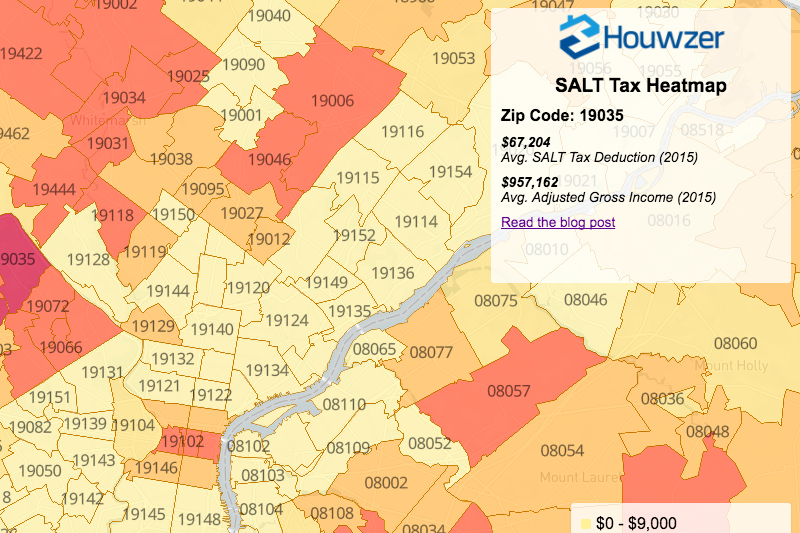This blog is the first in Houwzer Senior Economic Advisor Kevin Gillen's three-part research series examining how successful and beneficial the tax abatement program has been so far. Part one focuses on the trend and level in sales activity of previously tax-abated properties in their post-abatement period.
Mayor Kenney’s recently proposed increases in the property tax and real estate transfer tax in order to cover the School District’s $105m deficit will likely reopen the public discussion over the city’s ten year tax abatement program. Council President Clarke has stated that he would like to “revisit” the abatement program in 2018. This begs the question: Has the Philadelphia tax abatement program been successful so far? What happened to previously tax-abated properties after the tax abatement expired?
Background
In 2000, the City of Philadelphia enacted a real estate tax abatement program which allowed improvements to Philadelphia real estate to remain untaxed for 10 years following their completion. The aim of the program is to promote new construction, jobs, and an expanded tax base. For new construction homes, the tax abatement is of very high value as the owner only has to pay real estate taxes on the value of the land (typically, only 10-20% of a property’s total value) for the first 10 years of the property’s existence.
Supporters and Critics
Like any major initiative, Philadelphia’s tax abatement program has been met with both support and criticism. Supporters of the abatement cite its success in helping to grow the city’s tax base by expanding the size and value of the city’s stock of real estate and attracting a new demographic of residents. Critics of the abatement suggest that the city is granting an excessive tax break to the development industry, for which the long-term benefits of new development do not exceed the short-term costs of foregone property tax revenue.
In order to conclude the net cost-benefit of the abatement program, it is critical to determine what has happened to abated properties following the expiration of their abatement after 10 years. For instance, if the properties have held their value and their residents have remained in the city following the expiration of each property’s tax holiday, then this supports the view of the abatement as a temporary tax incentive for which the long-term benefits exceed the short-term costs. However, if the units are liquidated at steep discounts and/or their former occupants vacate the city following the tax abatement’s expiration, this would support the view of the abatement as an unnecessary or excessively generous program which has a high short-term cost, but fails to deliver on any substantial long-term benefits.
Evaluating the Numbers
Through an in-depth look at the 10,404 single-family properties that were granted abatements between 2000 – 2008, and matching them up to comprehensive sales data in the 2009 – 2018 period, Gillen was able to conclude the following:
- There has been no major liquidation or “fire sale” of abated properties once their abatement has expired, with two-thirds remaining occupied by their original buyers even years after tax benefits have expired.
- It is empirically true that post-abated properties have had a higher turnover rate than overall housing in general: 34% v. 30%.
To the program’s critics, this turnover rate can be taken as evidence that a significant percentage of investors in these properties are doing so primarily for the tax benefit, and they are disinvesting in these assets once the tax benefit of owning them is terminated. To the program’s advocates, this 4-percentage point difference would likely not be considered large enough to be of concern.
While previously abated units may have a higher turnover rate than housing in Philadelphia as a whole, whether this is good or bad is heavily dependent upon three factors:
- Whether or not the previous owner-occupant of an abated unit stays in the city or leaves.
- Whether the subsequent buyer of the post-abated unit is a new resident to the city or an existing one.
- Whether or not the expiration of the abatement has significantly reduced the value of the unit.
Best case scenario: sellers of post-abated units remain in the city, the subsequent buyers of these units are new residents to the city, and post-abated units hold their value. This maximizes the fiscal benefits of the program in the form of additional wage, sales and real estate tax revenues. Worst case scenario: sellers of post-abated units vacate the city, the next buyers of these units are already existing residents of the city, and post-abated units experience significant drops in their value. This would result in a significant loss in city revenue relative to the initial benefits generated by the abatement program, and would likely provide meaningful evidence that the benefits of the program are relatively small compared to its costs.
In reality, the truth almost certainly lies somewhere in between these two extreme scenarios. Read part two of this series, where Gillen examines what has happened to the value of abated properties in their post-abatement period.
Thinking about buying or selling your home? Schedule a free consultation with one of our Realtors.
Get Started
Read the full report for more details.



